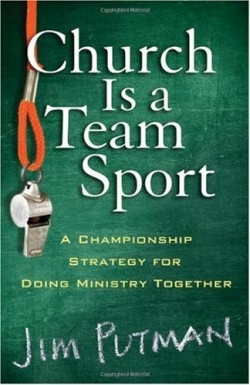Church Is a Team Sport
A Championship Strategy for Doing Ministry Together
As a teenager, Jim Putman rebelled against his pastor father’s religious beliefs. He studied subjects in college that challenged the authenticity of Christian doctrine and decided that God didn’t exist. Instead of contradicting him, his father suggested that Putman might want to research all sides of the question before making a definitive decision.
A student of history, the author explored many religions, and “came to believe that Christianity is the only historically provable religion in history.” A champion wrestler, Putman prepared for a career as teacher and coach. He earned honors coaching high school wrestling teams and served as a youth minister for nine years before making ministry his life’s calling. In Church Is a Team Sport, he uses sports analogies to illustrate his ideas about building a participatory congregation. Putman believes that sports teams and churches succeed by paying attention to the welfare of each individual.
New people come to church for inspiration and guidance but often end up feeling lonely or ignored, the author explains. And too many church leaders focus too much of their time on being in the spotlight. Big shows do not necessarily build bigger congregations. As one newcomer said to Putman, “What’s the point of telling us to follow if you are not going to show us how?” The author and his team have developed a four-phase program to integrate new church members into a congregation. The “Share” phase helps newcomers learn to connect through relationships. The “Connect” phase teaches them to love God and others. In the “Minister” phase, they receive guidance in changing from self-centeredness to people willing to help others. Finally, the “Disciple” phase prepares them to assist newer members.
Putman acknowledges that disagreement and strife among members can discourage people from participating in religious fellowship. Starting as he did from a position of doubt and mistrust, he presents a tolerant approach that has worked for both him and his church. Churchgoers who have witnessed the downside of organized religion will welcome this team-building concept of creating a more genuinely loving church environment. The book offers proven guidelines for pastors who want to create an genuine atmosphere of congregation in their churches.
Reviewed by
Margaret Cullison
Disclosure: This article is not an endorsement, but a review. The publisher of this book provided free copies of the book to have their book reviewed by a professional reviewer. No fee was paid by the publisher for this review. Foreword Reviews only recommends books that we love. Foreword Magazine, Inc. is disclosing this in accordance with the Federal Trade Commission’s 16 CFR, Part 255.

